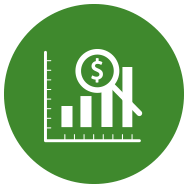Why are Health Care Costs an Urgent Problem?
For decades, health care costs have risen at rates that outpace the general rate of inflation. A 2019 Kaiser Family Foundation analysis found that the cost to families for health coverage and care has risen more than 2 times faster than wages and 3 times faster than inflation over the past decade.
What’s more, there is strong evidence that we aren’t getting the value that we should for our health care dollar. Quality is uneven and an estimated 30 percent of our spending is considered unnecessary. These cost and value issues aren’t just an academic exercise – they have a profound impact on the health and financial security of American families.
Many Families Cannot Afford Health Care they Need
Periodic surveys by the Kaiser Family Foundation reveal that half the U.S. population goes without needed care due to concerns about the costs they will have to bear. And one-quarter of those who do get care have trouble paying their medical bills.
The effects of unaffordable medical bills go well beyond the medical system. High medical bills don’t just keep people from filling prescriptions and scheduling doctors’ visits. They can also prompt deep financial and personal sacrifices, affecting their housing, employment, credit and daily lives. A Kaiser Family Foundation study finds the major impacts include their ability to pay the rent or the mortgage or buy food.
Rising Health Care Costs are Wiping Out Almost All Income Growth
A RAND analysis compared a family’s health care cost burden in 1999 with that incurred in 2009.The take-away message: although family income grew throughout the decade, the financial benefits that the family might have realized were largely consumed by health care cost growth, leaving them with only $95 more per month at the end of the decade.
Lower-Income Families’ Budgets are Hit the Hardest
Low-income families are less likely to have health insurance to help with medical costs. Further, when low-income families do have employer coverage, health premium increases (being a fixed expense) absorb a larger share of the employee’s compensation compared to a high-income employee. In one study, workers in the bottom-income group who were insured had a ratio of employer-paid premiums to household income of 20 percent. That compared with 3.3 percent for the top-income group. Hence, rising health care costs contribute to income inequality around the country.
…but Rising Health Care Costs are an Issue for Middle-Class Families as Well.
In 2009, a fifth of middle-income people under 65 reported spending more than 10 percent of their incomes on health care expenses—up significantly from 2000, according to a report commissioned by the AARP Public Policy Institute. Even middle class families with insurance find they struggle to pay their share of the medical bills.
State and Federal Budgets Devote an Increasing Share to Health Spending
Rising health care spending forces painful tradeoffs within household budgets, but also in state and federal budgets. These are tradeoffs we’d rather avoid, like reducing spending on education or charging Medicare beneficiaries more for care.
It’s Time for Sustained Policymaker Focus on this Issue
The stress and economic pain on families associated with health care spending is not necessary. Other industrialized countries provide health care for their citizens at a significantly lower cost than the U.S.. As noted above, up to one-third of U.S. health spending may be unnecessary. While this policy problem is not new, it has not yet received sustained, comprehensive attention from policymakers.
Affording health care is a top-of-mind issue for both insured and uninsured people, according to a Consumers Union study. In focus groups and a nationwide survey, consumers signal they want policy makers to take action on this important issue.
| Download PDF of this report by clicking here. |







